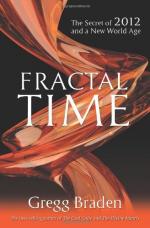|
This section contains 1,954 words (approx. 7 pages at 300 words per page) |

|
The term "fractal" was coined by Benoit Mandelbrot to describe a "self-similar" geometrical object that looks much the same on many different scales of measurement. This property contrasts with the property of a circle, for example, which loses its structure when viewed on a different scale and becomes almost a straight line when any arc is greatly magnified.
Fractals are representations of objects with an infinite amount of detail. When magnified, fractals do not become simpler, but instead remain as complex as they were without magnification. This is why fractals seem to describe natural objects in a better way than simple geometric figures like triangles, rectangles, or circles.
A coastline is a classical example of self-similarity in nature. From the air, a sea coast looks irregular by virtue of its bays and headlands. A closer look will reveal the same structure yet on a different scale. Each bay...
|
This section contains 1,954 words (approx. 7 pages at 300 words per page) |

|


